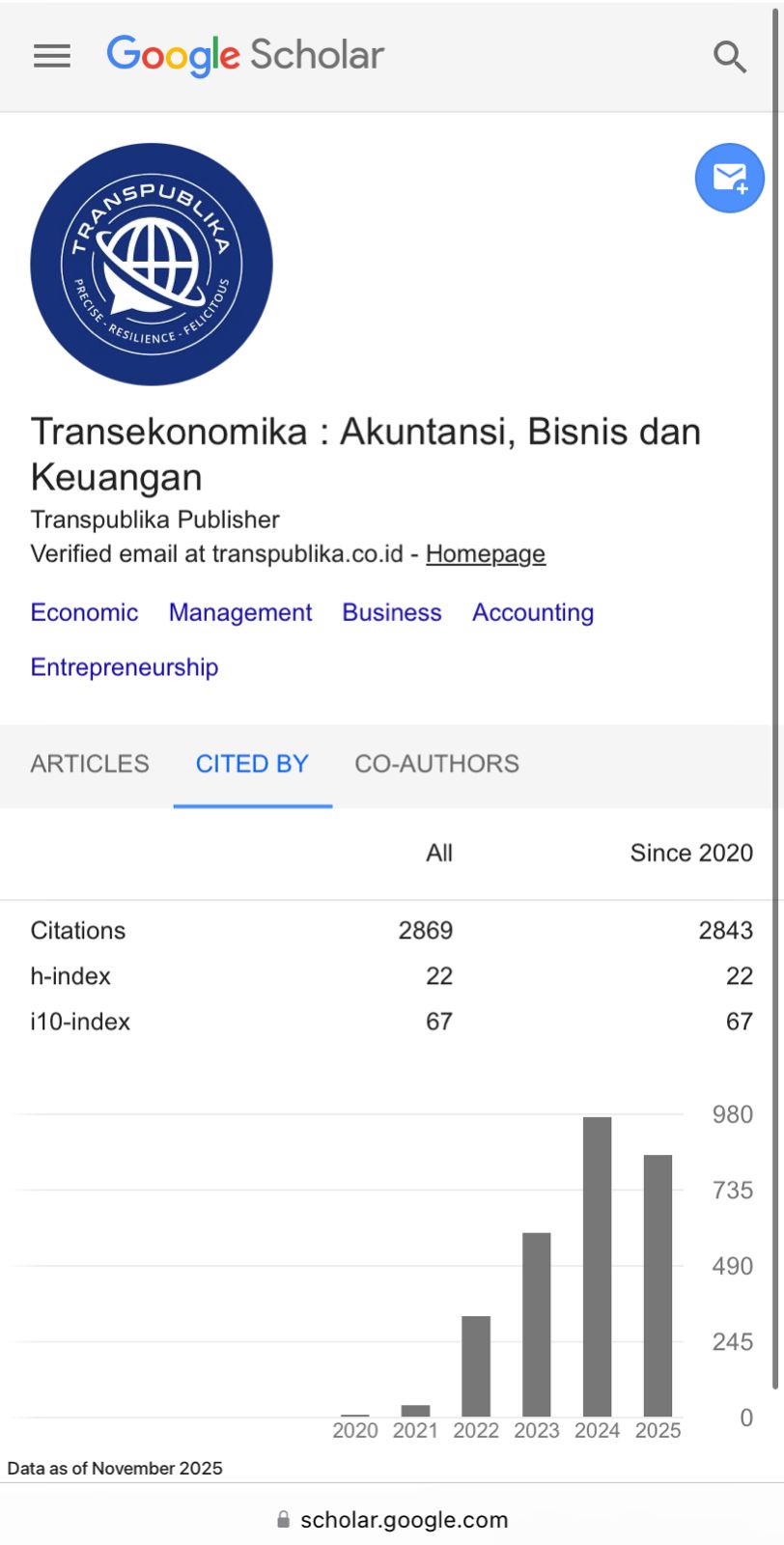IMPROVING PERFORMANCE THROUGH APPLICATIONS ON GRABFOOD DRIVERS PT. GRAB INDONESIA IN SURABAYA CITY
Abstract
Currently, it is known that the use of the internet and electronic goods in Indonesia has increased drastically with the emergence of online buying and selling sites and services. The increase in online buying and selling systems and online food delivery services has led to the emergence of new applications such as Go-Jek, Grab, In-Driver and others, where these applications provide many kinds of services such as 2-wheeled and 4-wheeled delivery services, food delivery services, delivery services. goods, shopping services, house cleaning services and many more. This research aims to determine the performance of Grabfood PT drivers. Grabfood Indonesia since there were changes to the Grabfood application in the city of Surabaya. The approach used in this research is descriptive. The population in this study were all Grabfood PT drivers. Grab Indonesia in Surabaya City. The sample used in this research used quota sampling of 60 drivers in the city of Surabaya. The data collection techniques used in this research were interviews and questionnaires. The results of this research show the performance of Grabfood PT drivers. Grab Indonesia is positive regarding changes to the Grabfood application.
Downloads
References
Agu, M. N., Nwoye, C. I., & Ogbuokiri, B. O. (2015). Enhancing courier service with the development of an interactive mobile app in android platform. IOSR J. Mob. Comput. Appl, 2(2), 2394â.
Akbar, S. (2018). Analisa Faktor-faktor yang mempengaruhi kinerja karyawan.
Becker, T. E., & Klimoski, R. J. (1989). A field study of the relationship between the organizational feedback environment and performance. Personnel Psychology, 42(2), 343–358.
Berner, A., & Van Tonder, C. L. (2003). The postmodern consumer: Implications of changing customer expectations for organisation development in service organisations. SA Journal of Industrial Psychology, 29(3), 1–10.
Bungin, B. (2013). Metodologi Penelitian Sosial & ekonomi: Format-format kuantitatif dan Kualitatif untuk studi sosiologi, kebijakan publik, komunikasi, manajemen, dan pemasaran.
Chorneukar, M. J. (2014). To study the customer perceptions of electronic food ordering. St. Joseph’s Evening College–Pondicherry University Twinning Programme Pondicherry–605014, Batch (2012–2014) Revealed from Http://Www. Sjput. In/Pdf/LMarketing% 20sample% 20project. Pdf.
Davis, G. F. (2009). Managed by the markets: How finance re-shaped America. OUP Oxford.
Guritno, B. (2005). Waridin. 2005. Pengaruh Persepsi Karyawan Mengenai Perilaku Kepemimpinan, Kepuasan Kerja Dan Motivasi Terhadap Kinerja. JRBI, 1(1), 63–74.
Indonesia, T. P. G. (2010). Sejarah Grab. Grab.Com. https://www.grab.com/id/brand-story/
Karcz, J., & Slusarczyk, B. (2016). Improvements in the quality of courier delivery. International Journal for Quality Research, 10(2), 355.
Mangkunegara, M. A. P., & Hasibuan, M. M. S. P. (2000). 2.2 Manajemen Sumber Daya Manusia.
mat nayan, N., & Hassan, M. K. A. (2020). Customer Satisfaction Evaluation For Online Food Service Delivery System In Malaysia. Journal of Information System and Technology Management, 5, 123–136. https://doi.org/10.35631/JISTM.5190010
Miles, M. B., & Huberman, A. M. (1994). Qualitative data analysis: An expanded sourcebook. sage.
Moeheriono, M. (2012). Indikator Kinerja Utama (IKU): Perencanaan, Aplikasi dan Pengembangan. Jakarta: PT. RajaGrafindo Persada.
Pitoewas, B., & Yanzi, H. (2018). Intelectual Skills Enhancement by Using Dukasan Media in Learning of Pancasila and Civic Education at Junior High School 26 Bandar Lampung. Annual Civic Education Conference (ACEC 2018), 62–67.
Rivai, V. (2016). Manajemen sumber daya manusia untuk perusahaan.
Robbins, S. P. (2002). The truth about managing people--and nothing but the truth. FT Press.
Schiffman, L. G., & Wisenblit, J. (2015). Consumer Behavior 11th Edition Global Edition. Pearson Education Limited.
Siagian, F. T. (2002). Earnings manipulation and the association between CEO bonus and accounting earnings. University of Oregon.
Thai, V. V. (2013). Logistics service quality: conceptual model and empirical evidence. International Journal of Logistics Research and Applications, 16(2), 114–131.
Vinaik, A., Goel, R., Sahai, S., & Garg, V. (2019). The study of interest of consumers in mobile food ordering apps. International Journal of Recent Technology and Engineering, 8(1), 3424–3429.
Westerman, G., Bonnet, D., & McAfee, A. (2014). Leading digital: Turning technology into business transformation. Harvard Business Press.
Winarto, C. (2019). Analisis Faktor-Faktor Yang Mempengaruhi Keputusan Konsumen Dalam Menggunakan Jasa Grabfood Di Surabaya. Seminar Nasional Ilmu Terapan, 3(1), E6–E6.
Xu, J., Jiang, L., & Li, Y. (2013). Service requirement for terminal delivery: An empirical study from the perspective of online shoppers. Journal of Industrial Engineering and Management (JIEM), 6(4), 1223–1237.
Yaslis, I. (2005). Kinerja, teori dan penelitian. Liberty: Yogyakarta.
Yusra, Y., & Agus, A. (2020). The Influence of Online Food Delivery Service Quality on Customer Satisfaction and Customer Loyalty: The Role of Personal Innovativeness. 6–12.
Copyright (c) 2024 Muhammad Alif Massaid, Tutik Winarsih

This work is licensed under a Creative Commons Attribution 4.0 International License.








.png)







.png)


.png)

.png)















